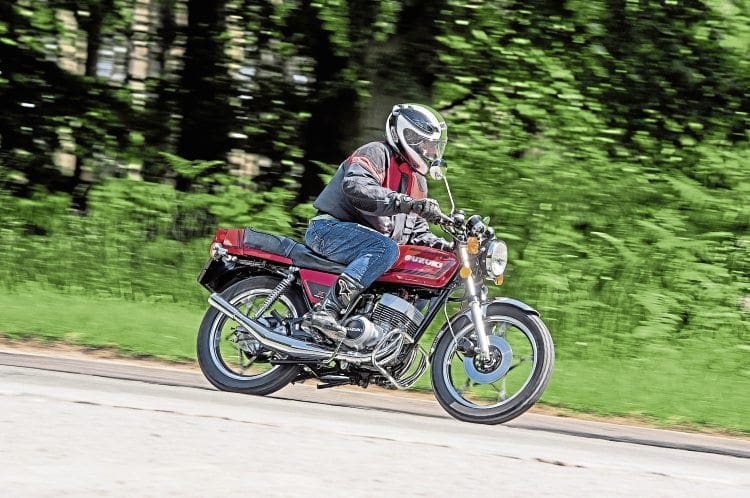Steve Cooper regales the way that Suzuki grabbed the two stroke crown in 1978
By the latter part of the 1970s it was obvious that Suzuki’s GT250 was showing its age.
Despite being the bestselling 250 in the UK, the clock had been ticking for the model for longer than many realised.
Essentially a revised T250 Hustler, it had sold well enough, but Yamaha’s RD250 was technically and dynamically a better machine. In 1976 Suzuki had upgraded the GT from three to four main bearings on the crank, added additional transfer ports and revised their geometries, but it was really only a papering over the cracks exercise.

The quarter litre category was a hugely fertile market to all of the big players; if you got a 17-year-old hooked on a brand with their first bike then, chances were, they’d buy another. Brand loyalty sold bikes but, by 1977, Suzuki wasn’t selling too many GT250s, even when substantially discounted.
A couple of years before, sales had been buoyant, but Yamaha’s astute restyling that delivered the seminal ‘coffin tank’ models had been a master stroke.
Beavering Boffins
Back in Hamamatsu, Suzuki’s R&D had boffins beavering away working on a new model that, they hoped, would totally outshine the tuning fork brand once and for all.
Yamaha had seriously eclipsed Suzuki and there was a desire to repay the compliment, and it was going to be delivered as a sharp slap to the face. The new machine was going to use Yamaha’s famously successful reed valve technology and take it one step further.
Although the carbs were still fixed to the back of the barrels, they exited directly into the crankcases, thereby delivering their fuel/air mixture in the most direct route possible… well, almost.
Technically the optimal route would have been via disc valves on the ends of the crankshaft, but this added width to the engine and cost to the build.
The other key area that Suzuki’s development teams worked on was weight reduction. The new machine was almost 20kg lighter than the old GT and it showed.
As much as possible was made from plastic and what wasn’t plastic was steel that had been thinned down or removed. The GT250’s frame had been a twin down tube affair, but its replacement ran a single down tube from the head stock, bifurcating into a pair of thinner tubes that cradled the engine.
Nothing had been carried over from the old 250 other than the model name, which was still, officially, GT250. Yet, to add confusion while at the same time giving the new machine its unique identity, the bike was marketed as the X7.
Even if the frame plate detailed the bike as a GT250, it was sold and known as the X7.
Read more in the October 2018 issue of OBM – on sale now!





